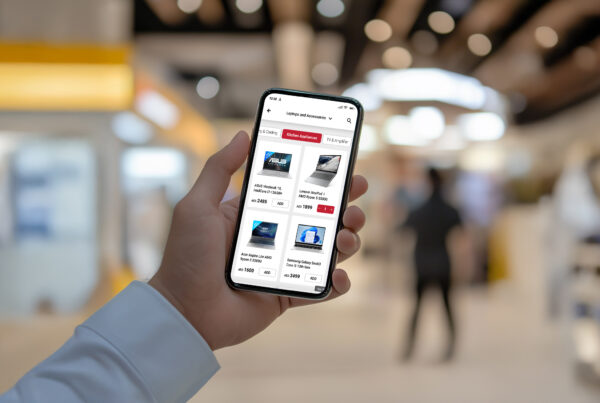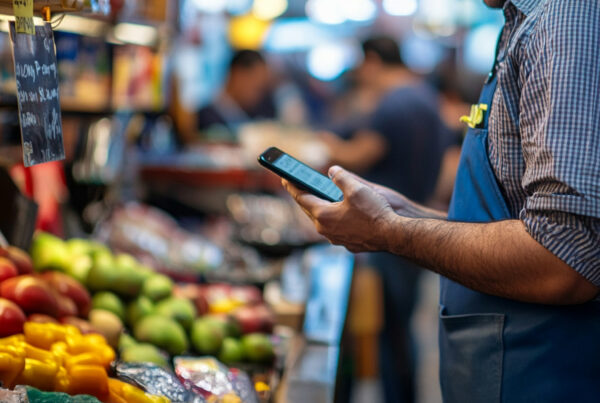As restaurants struggle to stay on the surface in an inflation-stricken market, it becomes increasingly unfavorable to cut back on food costs without hiking up menu prices. Even more so if you do not own a big fast food chain or fine dining restaurant, the wiggle room to negotiate with vendors starts to look bleak and reducing your restaurant’s food cost becomes inevitable. However, a smart reassessment of your food costs can go a long way.
When you’re starting a restaurant, no one prepares you for how taxing it can all be – ensuring that your food is always up to the mark, service is on point, deliveries are seamless, and costs are affordable enough for customers to return. Add to that the pressure of trying to achieve profits in times of inflation, while keeping your food costs in check and you have quite a task cut out for you.
Streamlining your restaurant’s food costs and meeting your business bottom line is the sweet spot that your restaurant needs to find.
In this blog, we’ll be diving deeper into the importance of reducing your restaurant’s food cost, answering how to control food cost in restaurants through unfavorable phases, and strategies to help you do so while keeping your profits intact.
Importance of controlling food costs for profitability
Truth be told, it’s not as hard as it is made out to be but controlling your food costs to achieve profits can be dicey if you’re not sure where to start.
Not to be confused with your menu prices, your food cost is the ratio of your restaurant’s cost of ingredients and inventory and the revenue generated against those ingredients when they are sold as ready items on the menu items which is nothing but your food.
It’s extremely important to control food costs to attain your business goals so that your customers don’t end up getting the rear end of the deal.
According to the Bureau of Labor Statistics, prices have risen by 8.6% since the last year as restaurants continue to raise menu prices to accommodate the rising cost of ingredients and labor.
This is why, now more than ever, there is a dire need to control food costs so that menu prices can be moderated, without jeopardizing profitability.
Challenges and factors that affect food costs
Managing food costs can be really tricky and it is probably one of those things that seems tough to tackle from a restaurant’s perspective. Until now, the general notion that is associated with profitability and increasing the bottom line for restaurants has always leaned towards cost-cutting or increasing menu prices. Although cost cutting may seem like a feasible option, it doesn’t have to conform to the status quo – compromising on quality or the services that your restaurant provides. Cost cutting can also translate to re-examining where you’re overspending and where costs can be saved.
Turns out, 92% of operators say their restaurant food cost is a significant issue for their restaurant business.
Your food costs are often met with various challenges and is impacted by several factors such as inflation, pandemic, geopolitical events, global demand, exchange rates, government policy, diseases affecting crop yield, energy costs, availability of natural resources for agriculture, changes in the use of soil and weather events.
Despite these limitations, there are ways to maneuver your inconsistent restaurant food costs in your favor.
How to Control Food Cost in a Restaurant
There is no plain and simple formula when it comes to decoding how to control food costs in a restaurant. And food costs are affected by several factors that may be beyond your control. Having said that, it is still possible to have certain checks in place to keep your food cost at bay.
Optimize your inventory
One such check that helps you manage how to reduce food costs in your restaurant is optimizing your inventory. By accounting the ingredients and stock you have, how much you need to order, and the stock that is likely to run out soon, you can cover the tip of the iceberg that is your inventory management.
Some best practices that can help you manage your inventory would be keeping a tab on your inventory consistently using an inventory software or POS system, labeling and organizing your stock to make sure that the items on your menu don’t go out of stock. This can drastically improve your restaurant costs and also ensure that your bottom line is on the right track.
As such, inventory management can be extremely useful to limit food wastage, prevent overstocking or understocking, thus improving cash flow and reducing food costs.
Negotiate with your food suppliers
Negotiating with your food suppliers can play a pivotal role in decreasing your food costs, directly from the source. It may feel like a daunting task to start this uncomfortable conversation with your food suppliers but it can help you lower your food costs by getting better deals, discounts, or terms.
A good place to begin would be talking to your food suppliers about building long-term relationships, actively looking for competitive prices, ordering in bulk or shopping during off-season for a better price. This could be beneficial in saving money, ensuring quality and consistency, securing supply chain, etc. It always helps to have a checklist in place that helps you stay ahead of the curve before kickstarting the negotiations with your vendors.
Streamline your menu
Your menu can be a real tipping point in relation to your food costs. Let’s say you have too many items on your menu, you’re likely to deal with more ingredients and possibly more waste.
Having a simpler menu is key to reducing your food costs and you are going to purchase fewer ingredients, minimize waste and consequently increase your sales margin.
It is a wise call to eliminate low-profit or high-cost items and focus on dishing out popular items using seasonal or local ingredients which will correspond to lower food costs.
Streamlining your menu can potentially enhance efficiency and productivity as it centralizes your area of focus, elevates customer satisfaction and in all probability, boosts your profits.
Automate your processes
The rise of technology has been a boon to the world and the restaurant industry is indeed reaping all the benefits. Automating underlying processes can not only strengthen your bottom line but also optimize various processes in your restaurant operations. Ultimately, when your operational costs are in check, you are sure to save big bucks on food costs.
Technology has advanced significantly to create seamless processes that simplify operations, manage your menu, restaurant staff, process payments and deliveries – all digitalized!
Most software solutions like delivery and order management systems are built to ensure efficiencies on the operational front. Lyve taps into a combination of multiple technology-centric features like omni-channel order generation, accepting contactless payments, and an intuitive dashboard for organized management; all of them play a vital role in saving time and resources which adds up to overhead costs.
Similarly, there are technologies that are created with the intention of making operational tasks easier. A hefty chunk of your restaurant’s expenses is drained out in deliveries and fulfilling orders. These costs cannot be excluded from your restaurant costs for obvious reasons. With Lyve’s delivery management system, it is virtually impossible to bleed out your budgets. Especially with features like order clubbing and route optimization, that are specifically designed to reduce human error, save time plus resources,p and limit unnecessary spending.
The evolution of technology has enabled the automation and optimization of processes that have resulted in reduced waste, limited unnecessary spending, decreased labor costs, lowered inventory costs, and improved customer experience.
Lyve empowers your restaurant to plug into a fully-integrated ecosystem that facilitates direct ordering with zero commissions, seamless order management, efficient deliveries, menu customizations, insightful reports of the orders received by your restaurant. The entire ecosystem is put together to save on commissions, operational costs, manpower and most importantly reducing the overhead operating costs that overburden most restaurant businesses.
Big brands like TGI Fridays have cut back on exorbitant costs with our solution – Lyve Order.
Here’s how TGIF saved $30k+ using Lyve – TGIF Middle East was seeking to connect directly with their customers and increase their revenue share. From the moment the brand went live on Lyve, orders started buzzing in with thousands of unique customers. This enabled them to successfully engage audiences with direct ordering solutions, allowing them to churn an increase in their direct revenue amounting to $50k+ and save a whopping $30k+ in commissions! This is how they achieved the optimum balance of profitability plus reduced costs for their restaurant outlets and wrote their success story in the process.
Key Takeaways
Taking notes from TGIF’s books, it is paramount for your restaurant business to truly imbibe the importance of controlling restaurant food costs while still holding on to the revenue stream in its entirety. There may be several challenges that would appear to hinder the reduction of your restaurant’s food costs like recession, but it’s still viable to keep these costs to a minimum, without letting it eat into your profits.
As a restaurant owner, if you are able to reduce your food costs, and not let your menu prices soar high as you enhance your bottom line, you’ve cracked the code to your restaurant’s success.



